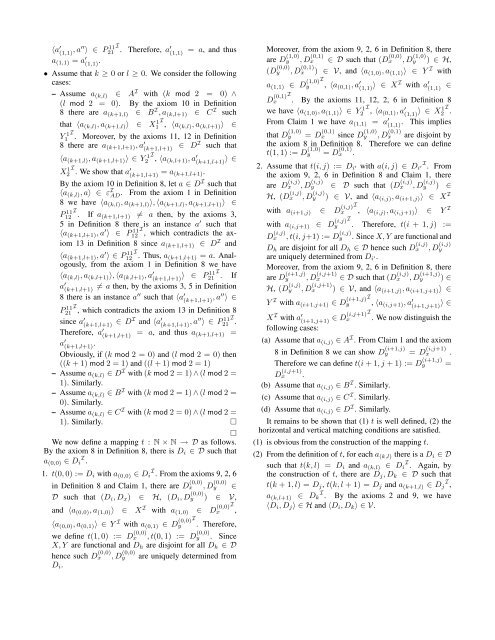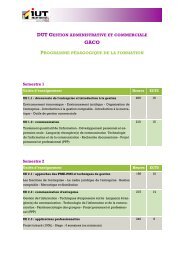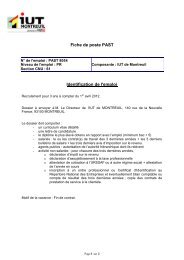Decidability of Description Logics with Transitive Closure of Roles
Decidability of Description Logics with Transitive Closure of Roles
Decidability of Description Logics with Transitive Closure of Roles
You also want an ePaper? Increase the reach of your titles
YUMPU automatically turns print PDFs into web optimized ePapers that Google loves.
〈a ′ (1,1) , a′′ 〉 ∈ P21 11 I<br />
. Therefore, a<br />
′<br />
(1,1)<br />
= a, and thus<br />
a (1,1) = a ′ (1,1) .<br />
• Assume that k ≥ 0 or l ≥ 0. We consider the following<br />
cases:<br />
– Assume a (k,l) ∈ A I <strong>with</strong> (k mod 2 = 0) ∧<br />
(l mod 2 = 0). By the axiom 10 in Definition<br />
8 there are a (k+1,l) ∈ B I , a (k,l+1) ∈ C I such<br />
that 〈a (k,l) , a (k+1,l) 〉 ∈ X1 1 I<br />
, 〈a(k,l) , a (k,l+1) 〉 ∈<br />
Y1<br />
1 I<br />
. Moreover, by the axioms 11, 12 in Definition<br />
8 there are a (k+1,l+1) , a ′ (k+1,l+1)<br />
∈ D I such that<br />
〈a (k+1,l) , a (k+1,l+1) 〉 ∈ Y2<br />
1 I<br />
, 〈a(k,l+1) , a ′ (k+1,l+1) 〉 ∈<br />
X 1 2<br />
I<br />
. We show that a<br />
′<br />
(k+1,l+1)<br />
= a (k+1,l+1) .<br />
By the axiom 10 in Definition 8, let a ∈ D I such that<br />
〈a (k,l) , a〉 ∈ ε I AD . From the axiom 1 in Definition<br />
8 we have 〈a (k,l) , a (k+1,l) 〉, 〈a (k+1,l) , a (k+1,l+1) 〉 ∈<br />
P12 11 I<br />
. If a(k+1,l+1) ≠ a then, by the axioms 3,<br />
5 in Definition 8 there is an instance a ′ such that<br />
〈a (k+1,l+1) , a ′ 〉 ∈ P12 11 I<br />
, which contradicts the axiom<br />
13 in Definition 8 since a (k+1,l+1) ∈ D I and<br />
〈a (k+1,l+1) , a ′ 〉 ∈ P12 11 I<br />
. Thus, a(k+1,l+1) = a. Analogously,<br />
from the axiom 1 in Definition 8 we have<br />
〈a (k,l) , a (k,l+1) 〉, 〈a (k,l+1) , a ′ (k+1,l+1) 〉 ∈ P 21 11 I<br />
. If<br />
a ′ (k+1,l+1) ≠ a then, by the axioms 3, 5 in Definition<br />
8 there is an instance a ′′ such that 〈a ′ (k+1,l+1) , a′′ 〉 ∈<br />
P 11<br />
I<br />
21 , which contradicts the axiom 13 in Definition 8<br />
since a ′ (k+1,l+1) ∈ DI and 〈a ′ (k+1,l+1) , a′′ 〉 ∈ P21 11 I<br />
.<br />
Therefore, a ′ (k+1,l+1)<br />
= a, and thus a (k+1,l+1) =<br />
a ′ (k+1,l+1) .<br />
Obviously, if (k mod 2 = 0) and (l mod 2 = 0) then<br />
((k + 1) mod 2 = 1) and ((l + 1) mod 2 = 1)<br />
– Assume a (k,l) ∈ D I <strong>with</strong> (k mod 2 = 1) ∧ (l mod 2 =<br />
1). Similarly.<br />
– Assume a (k,l) ∈ B I <strong>with</strong> (k mod 2 = 1) ∧ (l mod 2 =<br />
0). Similarly.<br />
– Assume a (k,l) ∈ C I <strong>with</strong> (k mod 2 = 0) ∧ (l mod 2 =<br />
1). Similarly. □<br />
□<br />
We now define a mapping t : N × N → D as follows.<br />
By the axiom 8 in Definition 8, there is D i ∈ D such that<br />
a (0,0) ∈ D I i .<br />
1. t(0, 0) := D i <strong>with</strong> a (0,0) ∈ D I i . From the axioms 9, 2, 6<br />
in Definition 8 and Claim 1, there are D x (0,0) , D y<br />
(0,0) ∈<br />
D such that (D i , D x ) ∈ H, (D i , D y (0,0) ) ∈ V,<br />
and 〈a (0,0) , a (1,0) 〉 ∈ X I <strong>with</strong> a (1,0) ∈ D x<br />
(0,0)<br />
〈a (0,0) , a (0,1) 〉 ∈ Y I <strong>with</strong> a (0,1) ∈ D y<br />
(0,0) I<br />
. Therefore,<br />
we define t(1, 0) := D x (0,0) , t(0, 1) := D y (0,0) . Since<br />
X, Y are functional and D h are disjoint for all D h ∈ D<br />
hence such D x (0,0) , D y<br />
(0,0) are uniquely determined from<br />
D i .<br />
I<br />
,<br />
Moreover, from the axiom 9, 2, 6 in Definition 8, there<br />
are D y (1,0) , D x (0,1) ∈ D such that (D x (0,0) , D y (1,0) ) ∈ H,<br />
(D y (0,0) , D x (0,1) ) ∈ V, and 〈a (1,0) , a (1,1) 〉 ∈ Y I <strong>with</strong><br />
a (1,1) ∈ D y<br />
(1,0) I<br />
, 〈a(0,1) , a ′ (1,1) 〉 ∈ XI <strong>with</strong> a ′ (1,1)<br />
∈<br />
D x<br />
(0,1) I<br />
. By the axioms 11, 12, 2, 6 in Definition 8<br />
we have 〈a (1,0) , a (1,1) 〉 ∈ Y2<br />
1 I<br />
, 〈a(0,1) , a ′ (1,1) 〉 ∈ X1 I<br />
2 .<br />
From Claim 1 we have a (1,1) = a ′ (1,1). This implies<br />
that D y (1,0) = D x (0,1) since D y (1,0) , D x<br />
(0,1) are disjoint by<br />
the axiom 8 in Definition 8. Therefore we can define<br />
t(1, 1) := D y (1,0) = D (0,1)<br />
x .<br />
2. Assume that t(i, j) := D i ′ <strong>with</strong> a(i, j) ∈ D I i ′ . From<br />
the axiom 9, 2, 6 in Definition 8 and Claim 1, there<br />
are D x<br />
(i,j) , D y (i,j) ∈ D such that (D x<br />
(i,j) , D y (i,j) ) ∈<br />
H, (D x<br />
(i,j) , D y<br />
(i,j) ) ∈ V, and 〈a (i,j) , a (i+1,j) 〉 ∈ X I<br />
<strong>with</strong> a (i+1,j) ∈ D (i,j) I<br />
, 〈a(i,j) , a (i,j+1) 〉 ∈ Y I<br />
<strong>with</strong> a (i,j+1) ∈ D (i,j)<br />
y<br />
D (i,j)<br />
x<br />
x<br />
, t(i, j+1) := D (i,j)<br />
y<br />
I<br />
. Therefore, t(i + 1, j) :=<br />
. Since X, Y are functional and<br />
, D y<br />
(i,j)<br />
D h are disjoint for all D h ∈ D hence such D x<br />
(i,j)<br />
are uniquely determined from D i ′.<br />
Moreover, from the axiom 9, 2, 6 in Definition 8, there<br />
are D y<br />
(i+1,j) , D x<br />
(i,j+1) ∈ D such that (D x<br />
(i,j) , D y<br />
(i+1,j) ) ∈<br />
H, (D y<br />
(i,j) , D x<br />
(i,j+1) ) ∈ V, and 〈a (i+1,j) , a (i+1,j+1) 〉 ∈<br />
Y I <strong>with</strong> a (i+1,j+1) ∈ D y<br />
(i+1,j) I<br />
, 〈a(i,j+1) , a ′ (i+1,j+1) 〉 ∈<br />
X I <strong>with</strong> a ′ (i+1,j+1) ∈ I D(i,j+1) x . We now distinguish the<br />
following cases:<br />
(a) Assume that a (i,j) ∈ A I . From Claim 1 and the axiom<br />
8 in Definition 8 we can show D y<br />
(i+1,j) = D x (i,j+1) .<br />
Therefore we can define t(i + 1, j + 1) := D y (i+1,j) =<br />
D x (i,j+1) .<br />
(b) Assume that a (i,j) ∈ B I . Similarly.<br />
(c) Assume that a (i,j) ∈ C I . Similarly.<br />
(d) Assume that a (i,j) ∈ D I . Similarly.<br />
It remains to be shown that (1) t is well defined, (2) the<br />
horizontal and vertical matching conditions are satisfied.<br />
(1) is obvious from the construction <strong>of</strong> the mapping t.<br />
(2) From the definition <strong>of</strong> t, for each a (k,l) there is a D i ∈ D<br />
such that t(k, l) = D i and a (k,l) ∈ D I i . Again, by<br />
the construction <strong>of</strong> t, there are D j , D k ∈ D such that<br />
t(k + 1, l) = D j , t(k, l + 1) = D j and a (k+1,l) ∈ D I j ,<br />
a (k,l+1) ∈ D I k . By the axioms 2 and 9, we have<br />
〈D i , D j 〉 ∈ H and 〈D i , D k 〉 ∈ V.
















